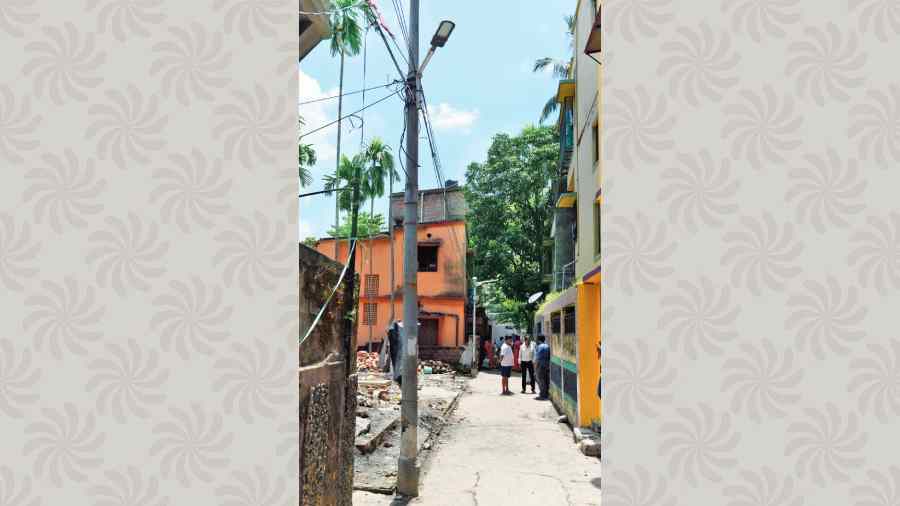Several traffic guards across Behala and Thakurpukur, covering parts of Diamond Harbour Road and Haridevpur in the southern suburbs, have been instructed to identify iron poles — including those carrying electric and telephones wires — that can be shifted to create more space for vehicles.
Several iron poles dotting parts of James Long Sarani, Brahmo Samaj Road, Rai Bahadur Road and Diamond Harbour Road on the southern suburbs were either redundant installations or located on spots that impede the flow of vehicles, police officers said.
Such posts were also located across parts of Julpia Road and Mahatma Gandhi Road in Paschim Putiary and parts of Kabardanga in Haridevpur.
An 11-year-old boy, Nitish Yadav, was electrocuted on Sunday evening when he held on to a pole in Haridevpur’s Mohammad Ishaq Road, while trying to walk through an inundated stretch.
Senior police officers said the aim of the survey was to identify such posts and to find out whether they can be dismantled or shifted elsewhere so that some road space can be culled out.
“A few posts have been built in such a way that they continue to eat into the road space of one of the flanks of some of these thoroughfares. There are a few redundant ones that pose threats of electrocution,” said an officer.
“We want to take a stock of such poles and see whether traffic movement can be improved by shifting them,” the officer said.
During such a drive four years back, several poles were shifted and re-located on footpaths. Some, which did not serve any purpose, remained at their previous locations.
“There aren’t many such poles on James Long Sarani. A few may have remained. Most of them were shifted,” said Sushanta Ghosh, councillor of Ward 120 in Behala. “But if police want to identify and shift the remaining few that would be a great initiative.”
Not sure whether all the poles erected on footpaths and elsewhere were properly maintained, Ghosh has instructed engineers from KMC to run a check and find out whether they were secured and there were no chances of electrical short-circuits.
